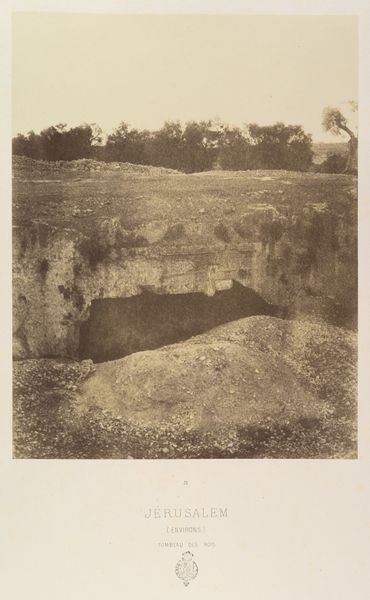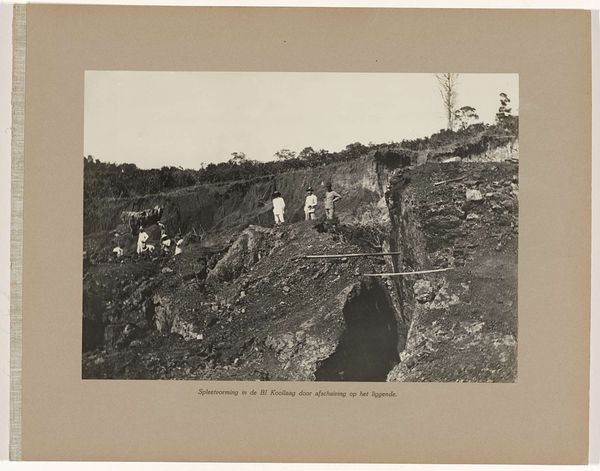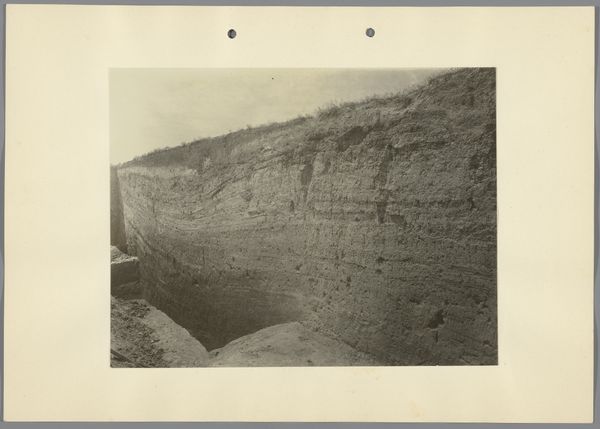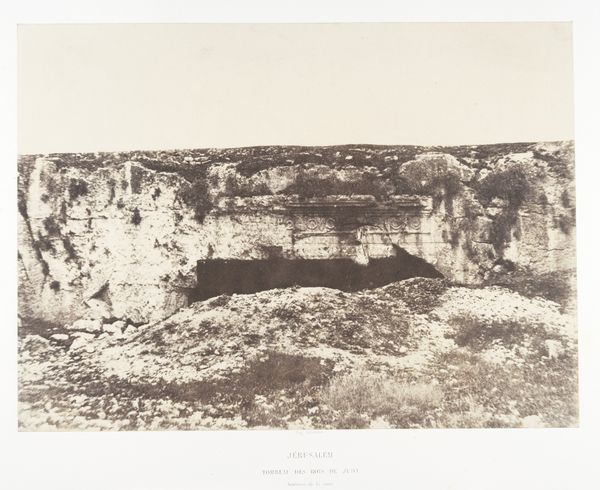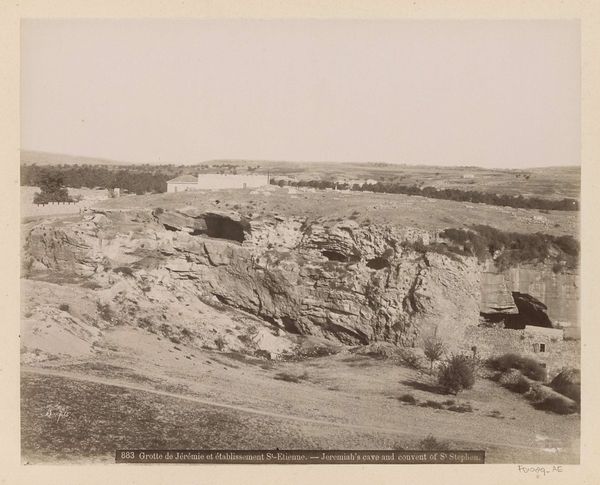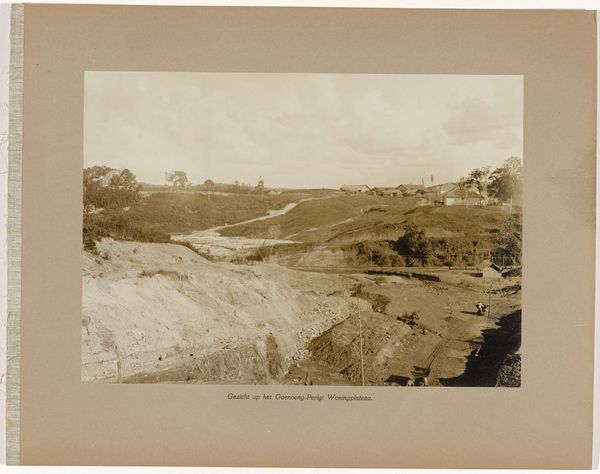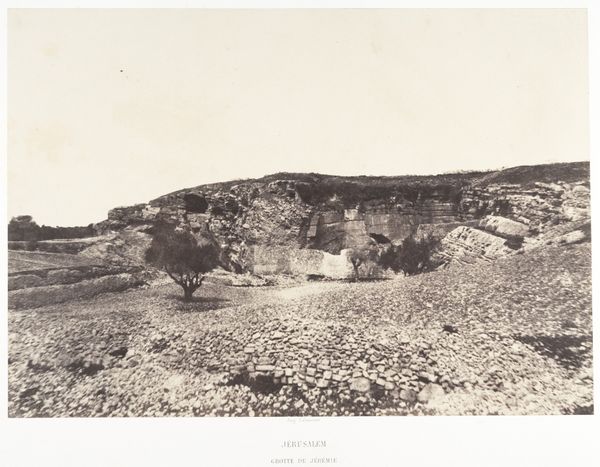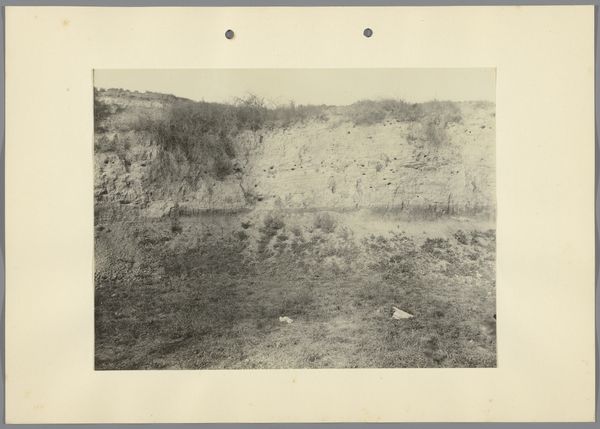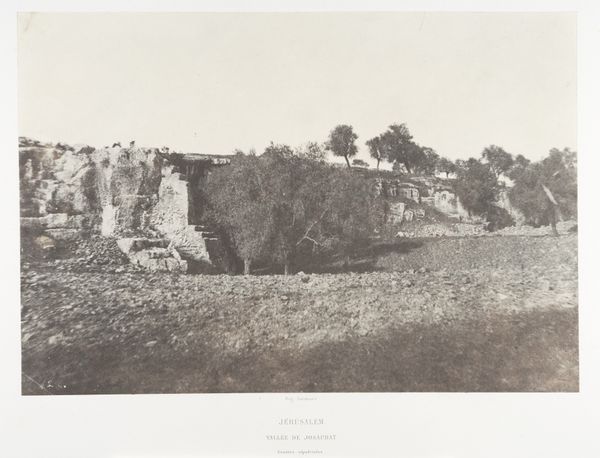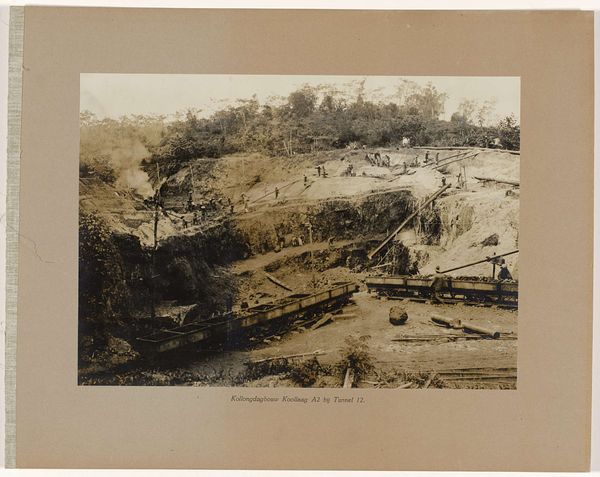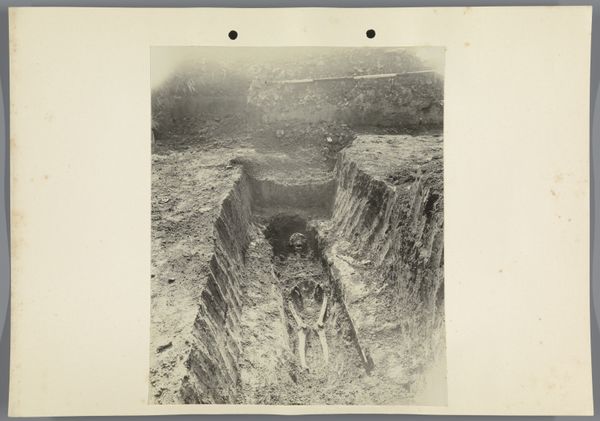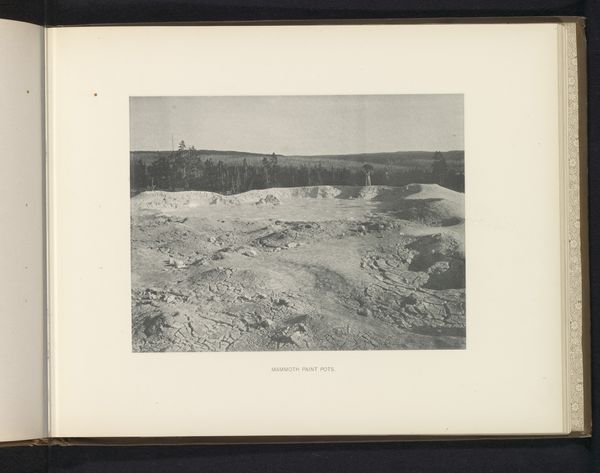
Jérusalem, Tombeau des rois de Juda, Cour extérieure 1854 - 1859
0:00
0:00
photography
#
organic
#
landscape
#
photography
#
orientalism
Dimensions: Image: 23.2 x 32.2 cm (9 1/8 x 12 11/16 in.) Mount: 44.6 x 59.9 cm (17 9/16 x 23 9/16 in.)
Copyright: Public Domain
Curator: Auguste Salzmann's photograph, "Jérusalem, Tombeau des rois de Juda, Cour extérieure," taken between 1854 and 1859, captures an exterior view of the Tombs of the Kings in Jerusalem. What are your initial thoughts? Editor: There's a somber quality to it, wouldn't you say? A stark, almost barren landscape. It feels…monumental in its emptiness, if that makes sense. Curator: Absolutely. Consider the laborious process involved. Salzmann employed the waxed paper negative method, requiring extensive preparation and darkroom work in the field. Each print embodies considerable investment of labor, challenging the ease often associated with photography today. Editor: The subject matter is quite loaded, given its location and the period. Taken during a time of intense European interest in the 'Orient', this photograph exists within a colonial gaze, doesn’t it? How might Salzmann's position as a European man shaped his representation of this sacred site? Curator: The photograph’s materiality is important too. Saltzmann used paper coated with light-sensitive chemicals, each print individually produced. Differences between each of those contribute subtle unique character to each. And he sells these for profit of course... Editor: The "Orientalism" is undeniable. The sepia tones evoke a romanticized, distant past. By photographing this specific site, laden with religious and historical significance, Saltzmann participates in constructing a visual narrative of the Holy Land for a European audience. There is an almost predatory gaze as a viewer here. Curator: One must consider the audience's reception, indeed. For many, photography offered 'objective' access to far-off places, reinforcing hierarchies of knowledge and power. The cost, the exhibition—it all factored into a consumption model of image as object. Editor: Exactly. It's about consumption, but also about control. Photographs like these reinforced a European understanding of otherness, potentially erasing indigenous narratives, contributing to that othering of the 'holy land'. Curator: Reflecting on Saltzmann's effort in contrast with the context of orientalism has certainly changed my interpretation, underscoring how material realities intersect with larger political and ideological frameworks. Editor: I agree. Seeing this photograph through the lens of history makes its silences as powerful as what it depicts. The framing and focus becomes critical too as we now appreciate photography less as truth and more as interpretation.
Comments
No comments
Be the first to comment and join the conversation on the ultimate creative platform.

